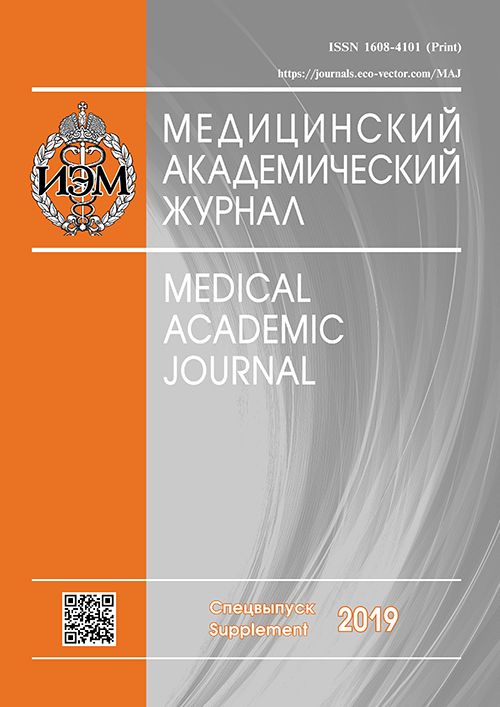THE EFFECT OF GLUTAMATE ON THE MIGRATION OF T CELLS FROM HEALTHY DONORS AND PATIENTS WITH MULTIPLE SCLEROSIS IN VITRO
- Authors: Maksimova MA1, Kuzmina US.1, Bakhtiyarova KZ2, Vakhitova Y.V1
-
Affiliations:
- IBG UFRC RAS, Ufa
- FSBEI HE BSMU MOH, Ufa
- Issue: Vol 19, No 1S (2019)
- Pages: 29-30
- Section: Articles
- Published: 15.12.2019
- URL: https://journals.eco-vector.com/MAJ/article/view/19309
- ID: 19309
Cite item
Abstract
Aim of study. To study chemotactic properties of glutamate and glutamate receptor agonists on T cells migration from healthy donors and patients with multiple sclerosis (MS) in vitro. Materials and methods. T cell migration of 15 patients with MS and 15 healthy donors was studied in vitro using transwells. Lymphocytes were activated with PMA (10 ng/mL). T cells were added to transwells with fibronectin (10 μg/mL) pretreated membrane. The lower chamber contained glutamate or AMPA or NMDA (100 μM for each) in complete RPMI medium. Migrated cells were collected and stained with antibodies to CD3-marker for subsequent analysis by cytofluorimetry. Results and conclusion. In presence of glutamate, there is a tendency to a decrease in migration activity in both groups of donors. T-cell chemotaxis of healthy donors, but not MS patients, decreased in concentration gradient of NMDA. The activation of lymphocytes with PMA leads to a decrease in the number of migrated cells by an average of 17% (p < 0.01). In MS patients there is a tendency to an increase in chemotaxis of activated cells in concentration gradient of glutamate, and a decrease with AMPA. Thus, glutamate and glutamate receptors agonists do not possess pronounced chemotactic properties, but rather enhance T-cell migration through synthesis of adhesion molecules on the surface of lymphocytes and endothelium.
Keywords
Full Text
About the authors
M A Maksimova
IBG UFRC RAS, Ufa
U Sh Kuzmina
IBG UFRC RAS, Ufa
K Z Bakhtiyarova
FSBEI HE BSMU MOH, Ufa
Yu V Vakhitova
IBG UFRC RAS, Ufa
References
- Levite M. Glutamate, T cells and multiple sclerosis. J. Neural Transm. (Vienna). 2017;124:775-798.
Supplementary files







